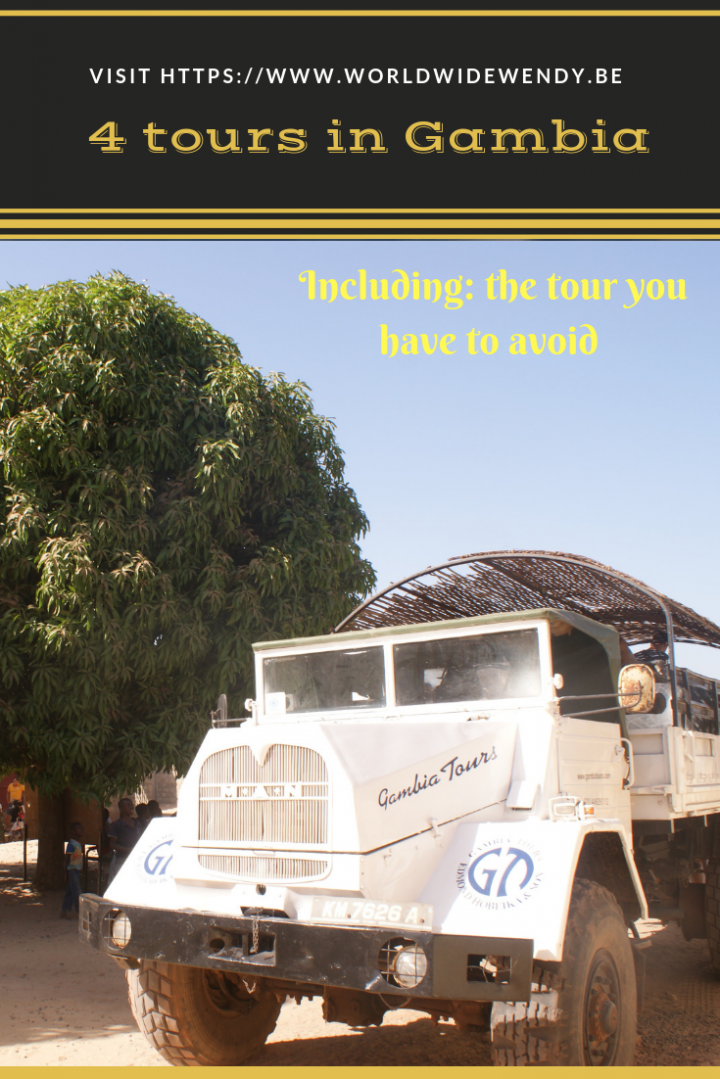The Gambia has a lot more to offer besides tropical sandy beaches. As the country is not very large, you don’t necessarily need to travel around. You can unpack your suitcase at one location, and do a few excursions from there. And besides the packing and unpacking, you also avoid the hassle of checking in and out this way. Below I will serve you up a lovely program of tours when you’re in the Gambia for a week, leaving lots of time to relax on those pearly white beaches.
Day 1: Crocodile Pool – Serrekunda -Lamin Lodge – Mangrove – Fishing port
After a wonderful breakfast you leave by taxi for your first excursion in Gambia. Today you will visit the Crocodile Pool! This is one of the three holy pools in the Gambia where fertility rituals are performed. You reach the pool after a short trek through a bit of rainforest, and you will spot the crocodiles along the way if you look carefully. Apparently, they are fed regularly, as they don’t seem to be interested in tasting a bit of tourist. The 80 Nile crocodiles who live here are not behind glass or a wire. Most crocodiles hang out beside or in the pool.

The domain has been in the hands of the Bojang family for over 500 years.
Legend says that the Bojang family arrived here 500 years ago, and that they received assistance from the fertility god Kachikally who had taken on the shape of an old woman. She screamed for help as her daughter was drowning in the pool. Members of the Bojang family immediately came to rescue her. They were given the pool as a reward, with the request to keep wild animals there. Some weeks later, the family released two crocodiles here, and they were the start of a long line of crocodiles, 80 of which still live here.
It has been said that the crocodiles visit the neighbouring village in the rainy season, and there are stories about people who find a crocodile beside their bed in the morning. I can’t really tell you to what extent those stories are true.
After visiting the crocodiles, you can take another short hike through the forest, and have a look inside the small museum, but you’ll be done in about an hour. It is a bit of a tourist trap, but it is still a place of pilgrimage for women who want to get pregnant.
Every child born after a ritual bath will be named Kachikally.


It is only a short trip from Kachikally to Serrekunda. Here you will find the largest market of the Gambia. Your senses are filled with all the fragrances and the colours. They sell everything from large chunks of meat, dried or fresh fish, fruits and vegetables to fake Louis Vuitton. (Every self-respecting Gambian wears a Louis Vuitton belt, Yves Saint Laurent slippers or a Gucci t-shirt. They keep the counterfeit industry in China running at full speed). Beautifully dressed Gambian ladies do their shopping here. It is a true spectacle to move amongst the locals. Buy a bunch of bananas or a bag of nuts so you have something to nibble on during the rest of your excursion in Gambia.


Next is a long ride to Lamin Lodge. It is not very far in kilometres, but the road is in very bad shape. Calling it a “road” is a bit of a compliment really. It is a track of compacted red sand, full of potholes and bumps, through the interior of the country to Lamin Lodge, which lies at the edge of a beautiful bay.

Stop at the Lamin Lodge for a refreshing drink (calling it a “Lodge” is a bit much perhaps, it is more like a small shelter). A captain and two rowers will then take you on an hour-long boat trip through the mangroves. In a big canoe they leave the bay where a number of sailboats lie anchored, and they row into the mangrove. It is truly beautiful here, and with an absolute silence. And although there are lots of birds here, you really hear NOTHING. It was a long time since we experienced that. The captain points out beautiful birds regularly. We see kingfishers, cormorants, ospreys and a lot more. At the edge of the mangrove we see a snake and masses of crabs. Large numbers of oysters hang from the bottom of the trunks.


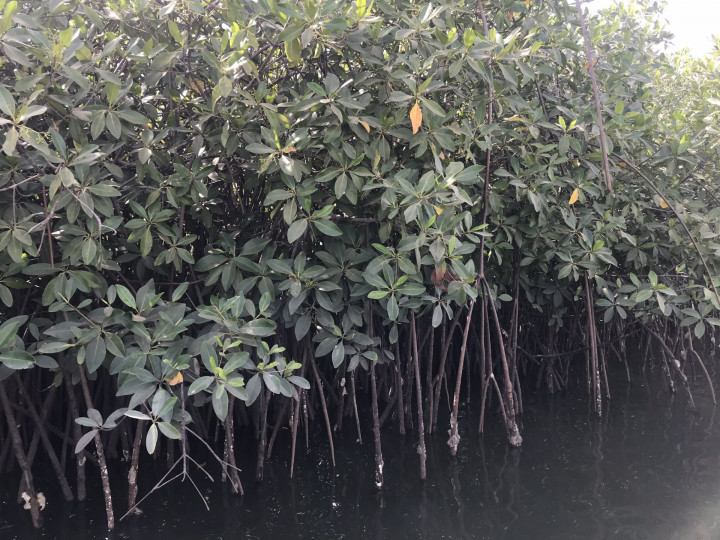
The main activities in Lamin are fishing at high tide, and picking oysters at low tide.
You have to pay a small toll near Lamin Lodge. This money goes to “the community”, and your captain and his buddies don’t receive any of it. So be sure to leave them a tip at the end.
Just before Lamin Lodge sits a man who prints his own t-shirts and trousers with African patterns. He would love to show you how it is done. Perhaps a nice souvenir?

After this very relaxing trip, it is time for the return journey through the Gambian bush-bush. The final stop of this day trip in the Gambia brings you to Tanji. Here you can view the brightly coloured fishing vessels used by the locals. The beautiful pirogues are in stark contrast with the sombre background. The women wait for the men to bring them their catch. Part of the fresh fish is immediately sold on the beach, and the rest is dried on corrugated sheets outside, or smoked over a primitive oven in a shack. The smell will meet you a long way away, and your senses go into overdrive. Try to get here in the late afternoon, as that’s when most canoes arrive.


After this impressive experience you return to your hotel to finish the day with a spectacular sunset from the beach, where you also enjoy the view of sporty Gambians improving their fitness.

ROUTE
Day 2: Banjul – Roots
The excursion “Roots”, to the James slave island is an absolute must-do in the Gambia. Here you learn everything about the horrifying past of the African slaves. The island has played an important role in its history, and is therefor a designated UNESCO World Heritage Site.
In the morning you leave by car for Banjul, the capital of the Gambia. Your driver parks the car, and you walk to the ferry terminal. The start of a true adventure. Be sure to arrive early so you can pick your spot at the top where you have a great view of the “loading” of the ferry – a true spectacle.

Cars and trucks are loaded onto the ferry with a lot of sign language and flag waving. We see trucks that are at least 40 years old, and who have driven along western highways in times long-past. The original advertising, for instance “IJsboerke”, is still visible on the side.
As usual in Africa, most people only arrive the very last minute. An endless, multi-coloured parade of people gets on at the same time. You really feel like you’re in Africa now. After finally everyone has boarded, the ferry splutters into action, and brings you to Barra in about 45 minutes.
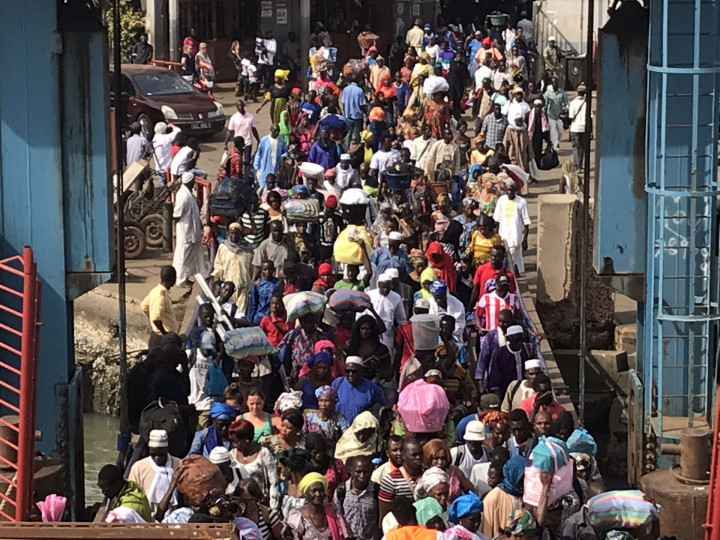
A lot of Africans make the trip back-and-forth all day to sell water, juice, soft drinks, nuts, biscuits, phone chargers, fresh juice in bags, or dried baobab fruits. There are business men in suits, men in their work clothes, hip youngsters in their own fake designer clothes, and beautiful African women in colourful dresses.
After three-quarters of an hour you’re on the other side of the Gambia river. It is really bustling here. The few white people on the ferry are accosted to see if you want to buy something or are in need of a taxi.
There are two ferries that leave every 45 minutes. During our trip, they left right on time, but according to other passengers, the ferry breaks down regularly, and the waiting times can seriously increase.
Our guide Saidou had arranged for his brother to do the second part of our excursion. In a withered Mercedes, brightly decorated for the holidays, we went into the bush. After an hour-long bumpy ride, we arrived in Albreda/Juffureh, a former Portuguese trade post.

Here we were immediately shuffled to the only bar. The owner is a Gambian who definitely knows the ropes. While you enjoy a refreshing drink, he brings you the menu. If you make your choice now, he will have it ready when you get back from your trip to James Island. Smart man!
But as my husband had anxiously watched the petrol gauge in the car on the way over, we decided to not have food here to ensure that we would be back in Banjul before dark. We also wanted to be sure we were not the last ones to leave. If we would run out of petrol in the middle of the bush, at least a passing car would be able to take us to Banjul.
After our drink we walked to the pier to take a small boat to James Island. I got a bit afraid when I realised the boats were three meters below the level of the pier because it was low tide. But this was no problem at all. There was a ladder ready for us to climb down. I’m not a fan of heights, nor of wonky ladders, so I really had second thoughts about going at all.

Once you’re on the boat, it takes about 15 minutes to get you to the island. Your own guide, a local guide, and a representative from the Red Cross go with you.
The island is eroding quickly (the island was six times bigger at the time), and will probably disappear altogether in the future.
The island features the ruins of the fort where they used to keep the slaves captive before sending them on transport to America or Europe. They were held in inhuman circumstances. There were 14 dungeons in which rebellious slaves were held, and so many were crammed in that they were forced to stay upright. Because of the erosion and a big explosion mid-18th century, only one dungeon remains. Any slaves who died during their captivity were not buried, but just thrown into the sea.
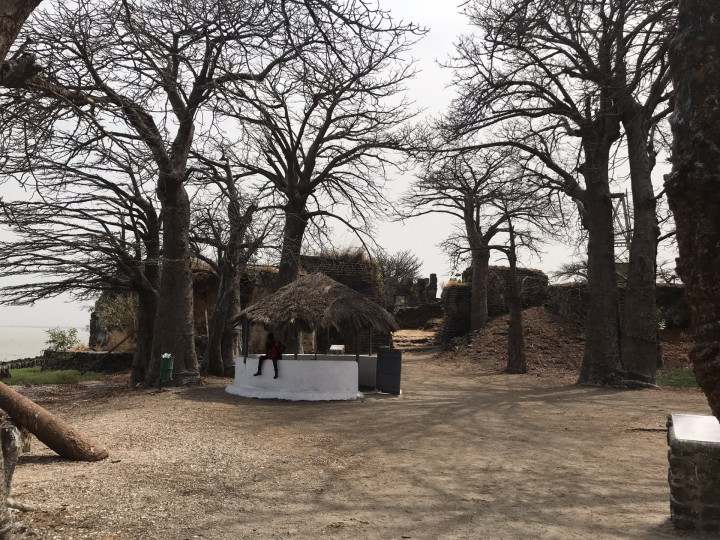
Slaves were held here for a maximum of two weeks before being shipped to Goree, the slave island off the coast of Senegal.
Back in Juffureh you stop at the flag pole.
Slaves who managed to escape from the island and could reach the pole were set free.
There is an eye-catching monument on the shore that symbolises the end of slavery.


After a short stop in the museum it is time to return to the hotel.
If you have any spare time, you can drive through Banjul on the way in or on the way back. You can read more about that in the blog post “A week in the Gambia”.
Day 3: Day trip to Fathala Game Park, Senegal
You haven’t been to Africa until you’ve done a safari. The nearest reserve is Fathala Game Park, 12 kilometres across the border in Senegal.
For Belgians (and others): If you plan to do this trip, be sure to take your passport. Although you can enter the Gambia with your identity card, you need a passport for Senegal.
You are collected early in the morning for your transfer to Banjul. From there, you take the ferry to Barra, and you pass through a few villages before reaching the border. After fulfilling the usual formal requirements, it takes about 30 minutes to get to Fathala Park. There you take your seat in a 4x4 for a two-hour safari. There are zebras, giraffes, monkeys…. And with a bit of luck you might spot the last remaining rhino.
After a late lunch you return to your hotel.

Day 4: Explore South-Gambia
During our holidays, we always arrange private excursions with someone local. This time we were persuaded to join a group excursion, which we immediately regretted. You’re sometimes better off not doing something, and this is one of those things, we think. Here it is anyway, so you can make up your own mind about this excursion in the Gambia.
After breakfast we’re picked up in an old army truck. It is open at the back, and it has some seats. The thatched roof protects you from the sun.

We drive southward, and stop at Yuna Village for a visit to the local school. It was a holiday, yet the playground was full of children and mothers.
We were ushered into a classroom and the head of the school talked to us. At the end of his speech he said it would be best to give him or the teacher the things we had brought for the children. It became clear later on why, when we saw that the teacher put part of the “spoils” in her own bag.
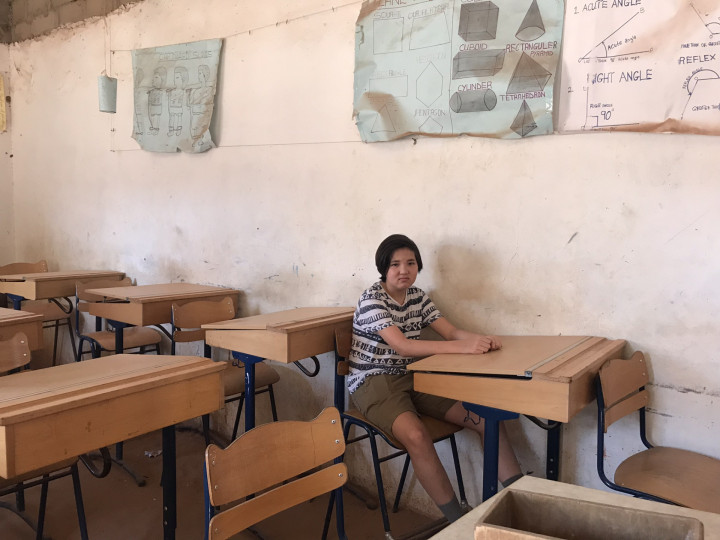
Back outside, we were surrounded by children and mothers in the schoolyard, all begging for money or other things. One of our fellow travellers thought it would be fun to hand out some money, nearly causing a massive fight. Disgusting and humiliating.
We did not meet any beggars during our trip at any time. Of course, they approach you everywhere, trying to make some money, but that is something completely different. These mothers and children are so used to these travellers passing through here, and they get a completely wrong impression of us, tourists from the West. We, and many others like us, were left with a bad taste in our mouth after this day trip.
In his brochure, the tour operator even states to certainly not buy anything from the children, or give them any money as you facilitate child labour by doing so.
This part of the excursion should therefore be immediately scrapped, or changed for an alternative that allows more structural and more humanitarian aid for the children.

After the visit to the school we drive on to Uncle John’s. Uncle John has long since gone, but in this little village, Samyang, they still tap the world-famous palm wine, aka Jungle Juice. Everyone gets a little taste of the palm wine and of some strong drink from the home distillery. Here, too, we were immediately surrounded by children and adults who hope you’ll give them something. They are actors in a scene that purportedly displays the real life in the Gambia. It is too bad that it is done with such a lack of respect.
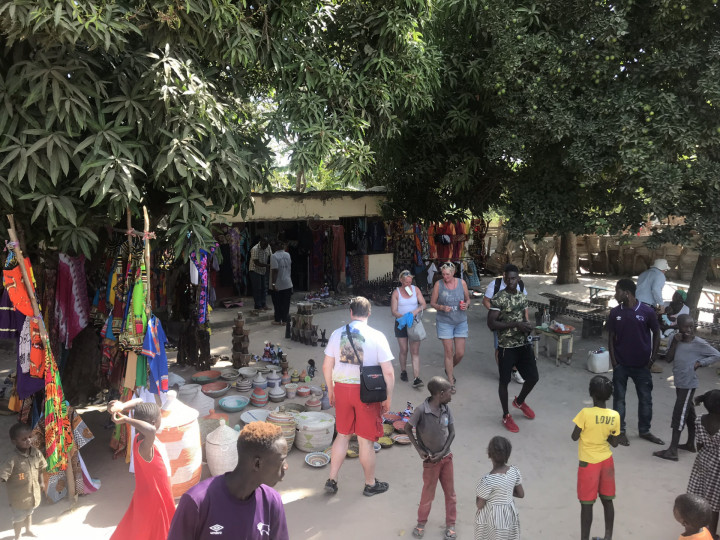
.Afterwards we were dropped at Paradise Beach for a lovely lunch, and there was time for a refreshing dive in the Atlantic Ocean, or a bit of rest at the beach.
The final part of the day trip brings us to the Tanje Village Museum about the history and culture of the Gambia. A group of local musicians plays some music for us.
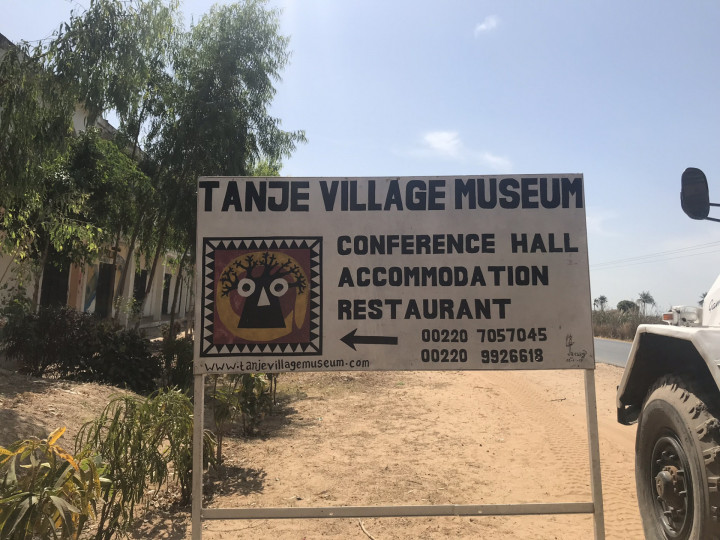
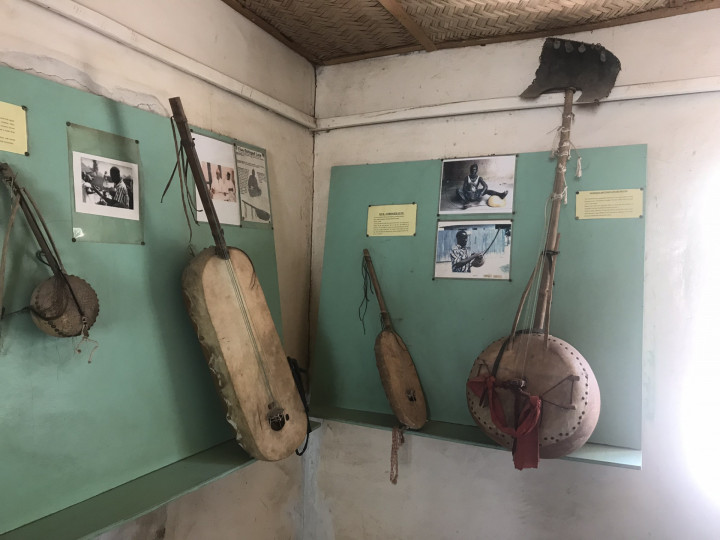
We pay a short visit to the local fish and vegetable market. Here, too, we see dried fish, and we walk through one of the shacks where the fish is smoked. It is always busy at these markets as most Gambians do not have a fridge, and need to buy their food fresh every day.
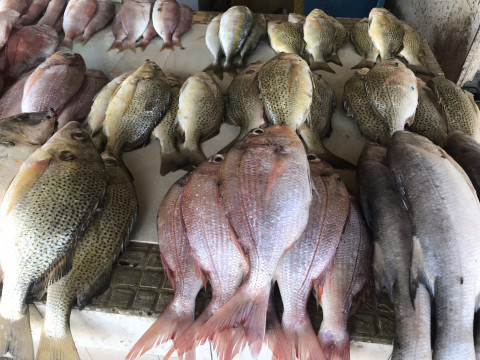
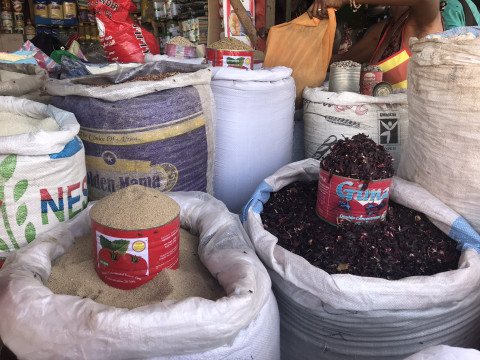
.To achieve the best relaxing holiday in the Gambia, mix the (sometimes tiring) tours in Gambia with some relaxing days at the beach.
Is the Gambia on your list?
Like it? Pin it!
